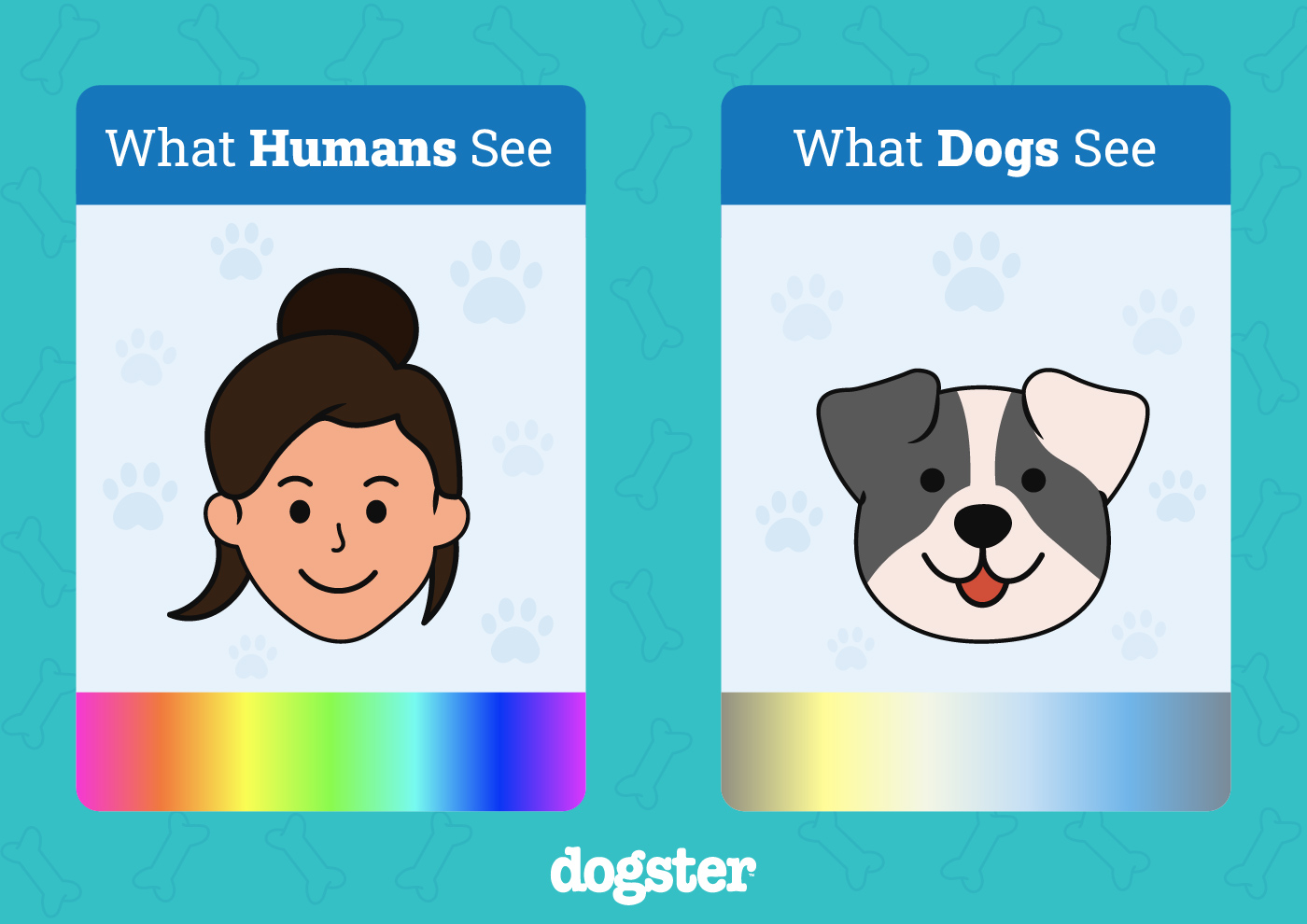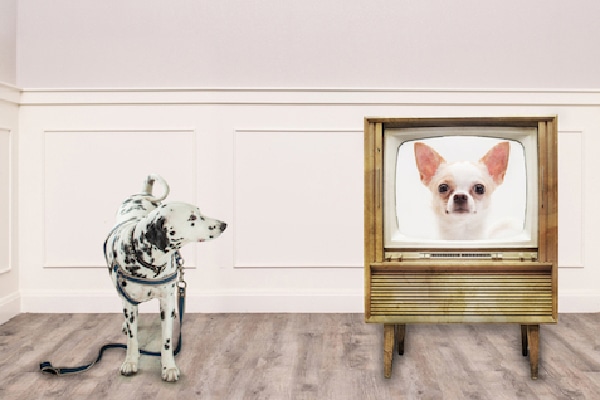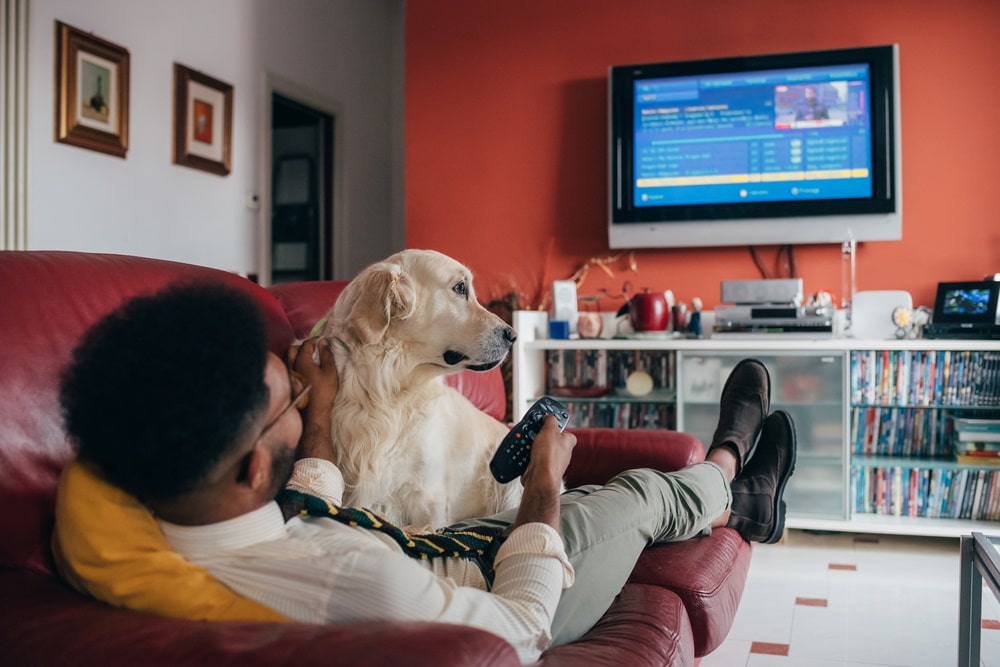Have you ever noticed your dog taking an interest in something on the TV screen, only to have a friend tell you later that dogs can’t actually watch TV? This is a common misconception, as dogs actually can watch TV. The real mystery is regarding what dogs are capable of seeing when they look at a TV. Since TVs are designed for human eyes, you and your dog will see things quite differently. So, what do dogs perceive when they look at a TV screen?

What Do Dogs See When They Watch TV?
Color
Humans have three types of photoreceptors in their eyes that are responsible for processing color, which enables us to see a wide range of colors. Dogs, however, only have two types of color-processing cells in their eyes. They can primarily see colors in blue and yellow shades.
Due to this, visuals on the TV that are heavy in colors that dogs can’t see well, such as red, brown, and white, will appear dull, and it may be difficult for the dog to distinguish between objects. Visuals that are rich in blues and yellows will be more interesting for a dog to look at.

Motion
Although their ability to see color is less developed than that of humans, dogs have more of the cells responsible for seeing movement and focusing in low-light environments than humans do. Therefore, your dog can detect movement on the TV screen, but they see it differently than you do.
If the screen has a refresh rate of 55 hertz or higher, humans aren’t able to detect flickering movement between the frames, which is why most modern TVs have a smooth appearance when you watch them. Dogs can detect movement up to 75 hertz, though, so if you have a TV with a 60-hertz refresh rate, the images on the screen will likely be jumpy and flickering to your dog.
Higher refresh rates can be appreciated by everyone and produce a smoother appearance of images. For you, this just makes for a more pleasant TV-watching experience. For your dog, this enables them to better visualize what’s happening on the screen. Newer TVs and computer screens have a high enough refresh rate that your dog shouldn’t have any difficulty visualizing movement on the screen.
Content
Dogs can identify familiar images on a TV screen, like other dogs and humans. They can also recognize the voices of familiar humans on television. Due to color, movement, and light variations in shows and movies, your dog may only be able to recognize objects under certain circumstances.
Obviously, it’s impossible for us to know what our dogs think when they see what’s on the TV screen, but some dogs show obvious signs of recognition toward images while watching TV.

Sound
When it comes to watching TV, dogs can’t use their strongest sense: smell. Therefore, they rely on their vision and hearing to determine what’s happening. Even if your dog isn’t able to clearly see what’s happening on the screen, they may show an interest in some of the sounds being played. The noises of dogs and other animals, doorbells, and squeaky toys seem to be some of the most interesting sounds for dogs to hear from the TV.
If your dog doesn’t take much interest in watching TV but does seem interested in certain sounds, there are videos online that can help you determine which sounds are of the greatest interest to your dog so you can find TV content to keep them entertained.

Conclusion
Since older TVs have a slower refresh rate, dogs may be less interested in viewing things on them. With newer TVs, though, you may notice your dog taking more of an interest in watching things on the screen. Like with people, a dog’s interest in the TV will vary based on how used they are to the TV, as well as their preferences. Some dogs may go their entire lives without even glancing at the TV screen, while other dogs may enjoy sitting down and watching a movie with you.
See Also:
- Can Dogs See in the Dark? Vet-Reviewed Facts & FAQ
- Is Watching Dog Videos Good for You? (What Science Says!)
Featured Image Credit: Eugenio Marongiu, Shutterstock



















